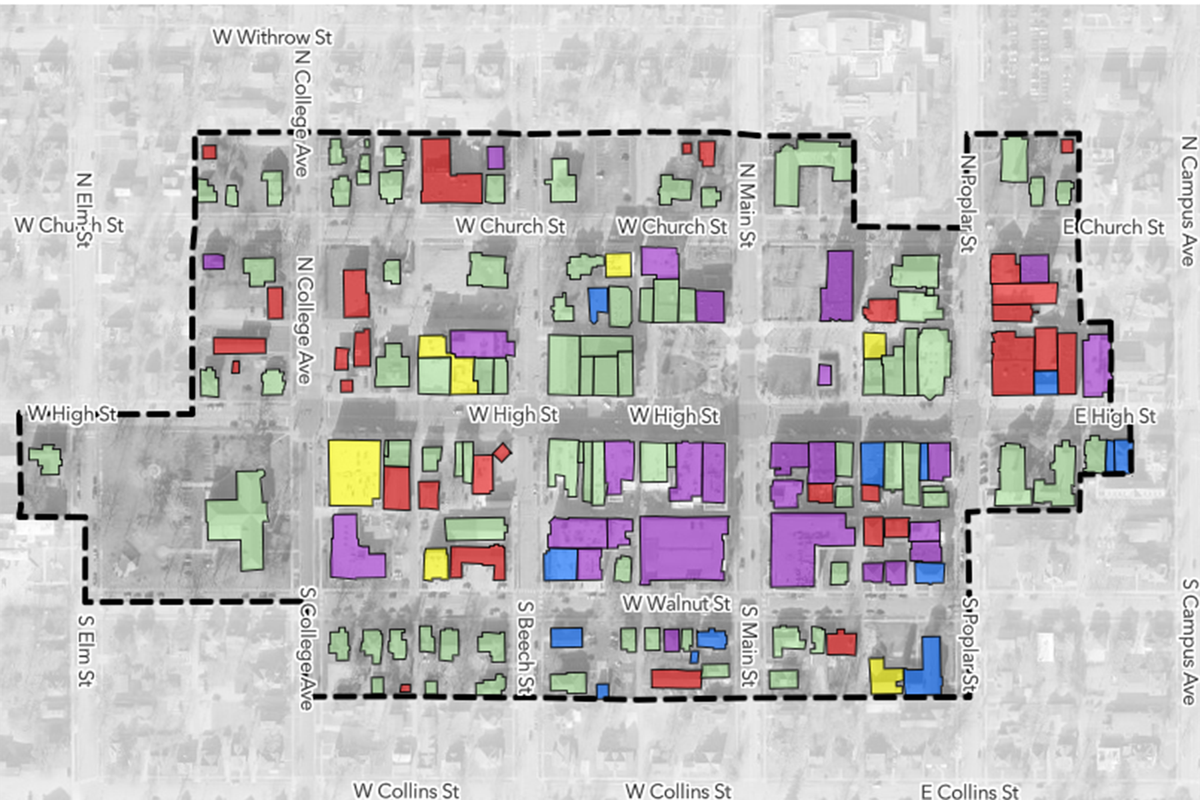New efforts to preserve historic buildings in Oxford could be on horizon
As Oxford continues to work with consultants to create a new historic preservation plan and update its design standards, pursuing National Register designation for the city seems likely.

Oxford could soon apply to designate the Mile Square on the National Register of Historic Places as city staff and consultants work to strengthen historic preservation efforts.
At a Historic and Architectural Preservation Committee (HAPC) meeting Jan. 8, committee members heard from consultants with McKenna and Preservation Forward. The city has contracted with McKenna to create a Unified Development ordinance, as well as update the city’s historic design guidelines and create a historic preservation plan for the city.
While the planning effort is a yearlong process and will require adoption by Oxford City Council, committee members and city staff had little objection to pursuing a national designation for the Mile Square.
“National designation is honorary; there’s nothing regulatory to it,” said Jennifer Flores, a consultant with Preservation Forward. “Regulatory is local.”
Sam Perry, community development director, said city staff have no objection to applying to the National Register. The designation carries no enforcement requirements or standards but could open up additional funding opportunities for both local government and property owners within the Mile Square. Ohio’s State Historic Preservation Office provides grants and tax incentives to owners of historic properties listed on the National Register.
Oxford currently has three locally recognized historic districts: the Uptown Historic District, the University Historic District and the Western College Historic District. The Western College for Women is currently listed on the National Register. The city maintains an inventory for the Uptown Historic District and design guidelines for all three.
In the last inventory of the Uptown Historic District, completed in 2018, the city gave each building one of four distinctions: historic contributing, historic non-contributing, non-historic contributing and non-contribution. That classification could also change as a result of the historic preservation plan. Flores said simpler two-category inventories with contributing and non-contributing labels only tend to be easier to understand and use.
Rémah Dinç, an HAPC member, said nominating the Mile Square for recognition seemed relatively easy and would be worth the city’s time. Both she and Corey Watt, another member of the HAPC, said Miami University’s property within the Mile Square should also be included in the application, particularly given the historic nature of many of the university’s buildings.
The HAPC discussed the potential to expand its enforcement districts beyond the current boundaries, though no decision has been made. Any expansion would put additional properties under the HAPC’s authority to regulate renovations and demolition of.
“I think an incremental approach to continuing to expand the culture and education of the value of preservation is going to be more sustainable than … [rapid] expansion of districts of increased regulation,” Perry said. “I think we’ll lose the favor of the general public, which are primarily student housing property owners.”
McKenna’s updated historic district design guidelines, once drafted, will be presented in public during a future HAPC meeting.




